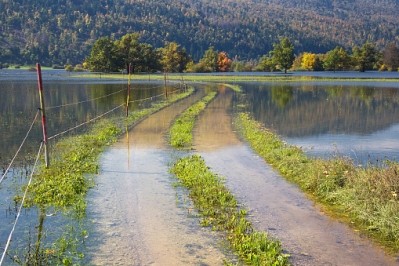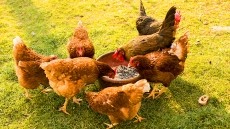Does wet winter weather forecast challenges for US feed crops?

Several Midwestern states, including Illinois, saw near record precipitation in December leading to flooding in fields and along the banks of the Mississippi, Illinois, Ohio and Wabash rivers, reported the National Weather Service. Flood warnings have continued into the early part of January.
In Illinois, the statewide average precipitation for December was 6.7 inches, 4.01 inches more than average and slightly below the state’s record, reported the Illinois State Water Survey.
“In most cases, any precipitation we get from mid-December to March comes as snowfall,” said Russel Higgins, extension educator in commercial agriculture with the University of Illinois Extension. “Our temperatures are usually at freezing or below. We had one of the warmest Decembers on record.”
Excess water could lead to nutrient loss in the soil, he told FeedNavigator. But it may be early in the year to be concerned about damage to feed crops like corn and soybean in 2016.
“We do have some winter wheat acres that could be affected,” he said. “The greatest concern with all the rainfall is possible erosion and, for at least the moment, the ground is frozen.”
However, while the amount of rainfall could bring damage to fields, it is not as threatening as flooding that delays planting or that happens after crops are in the ground, he said.
“From the commercial agriculture aspect it’s been an odd year,” he said. “We’re going to be most concerned about what happens in mid-March."
Potential crop concerns
Winter rains can erode topsoil, and have the potential to move fertilizer applied in the late fall, said Higgins. “It’s hard to admit it, but for Illinois farmers, rather than these huge rain events, it might be better for us to have snow.”
Many corn and soybean growers apply dry fertilizers in the fall to add phosphorus and potassium into the soil, he said. Though, less may have been used this year.
There also are some concerns that the flooding could cause more nitrogen to move in the soil, said Higgins. “If it makes it to nitrate, then it’s water soluble and it will move up and down in the soil profile,” he added.
Nitrogen is important for the development of the corn crop, he said. But nitrates can cause problems in municipal water supplies and have been linked to algae blooms in waterways.
It is unclear if there has been any movement of nitrogen in the soil as testing usually takes place during the growing season, he said.
“We’ll start pulling soil tests again in early April to give us an idea of where we’re at as far as nutrient levels,” he said. “We plant the crop in late-April to early-May and when they’re just starting to grow, if adjustments need to be made, we’ll have time.”
Winter flooding, however, does not bring the same disease concerns that floods during the growing season carry, he said.
“If we were to get this type of moisture during the growing season, it would be much more favorable for disease spread,” he said. “It’s very conducive to water mold growth and that’s a concern then, but not necessarily now.”
Possible weather trends
Weather-wise a best case scenario for 2016 crops would be for further precipitation to hold off for later months, said Higgins. “In a perfect world, we’d rather this precipitation falls in July and August,” he added.
However, there are also several months before a worst case scenario for the upcoming feed crop would happen, he said. That would be if heavy rains in the spring prevent crops being planted.
“That’s kind of what happened this past year,” he said. “We were saved by the fact that we had an extended fall.”
The fall growing season ran several weeks longer into October than usually happens, he said. If that hadn’t been the case, some crops might not have reached full maturity.
















